Many plants we grow as houseplants come from tropical, shady areas protected from direct sunlight during the hottest part of the day. In this article, let’s talk about west facing window plants.
Our living spaces with one or two windows provide a limited amount of natural light, creating an urban replica of the environment with indirect sunlight for tropical plants and making them feel well in our homes.
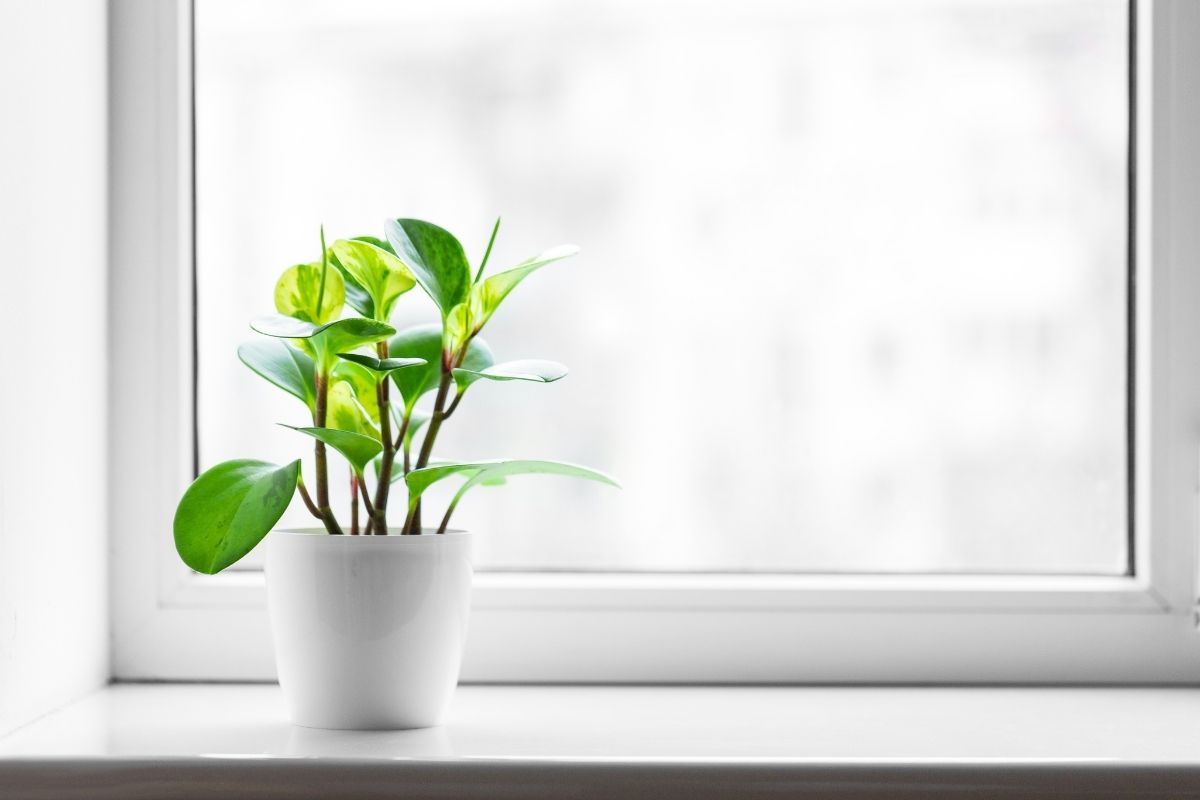
In this context, the west-facing windows provide several hours of bright light in the afternoon when the sun does not have the sharpness of the midday, which is an almost ideal surrounding for many window plants.
It is to say that there is a large selection of plants that will feel good next to the western window and not mind exposure to direct mild afternoon sun rays.
In this article, we have singled out only some of them.
Best West Facing Window Plants
1. Zebra Plant (Aphelandra Squarrosa)
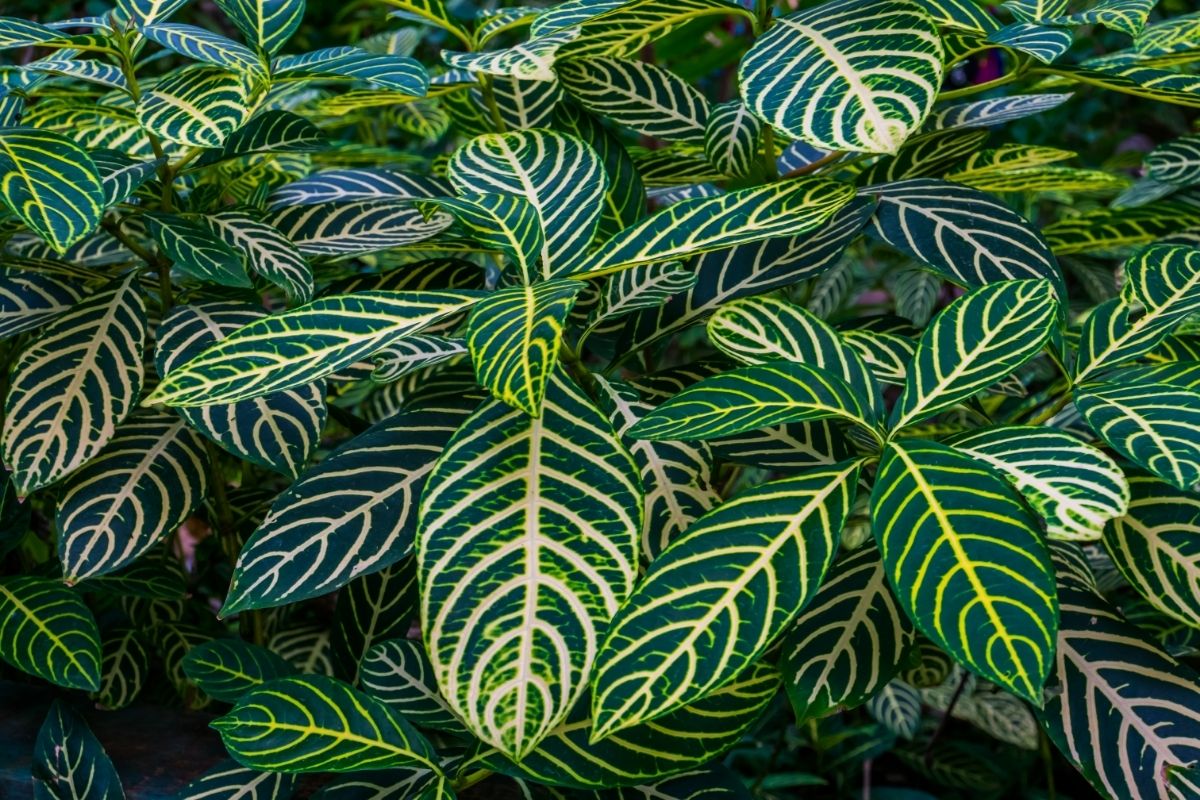
The Zebra plant is an evergreen bushy perennial plant of the Acanthaceae family native to tropical and subtropical parts of South America.
It has beautiful, dark green, oval leaves with pronounced, thick white, silver, or light yellow veins throughout the year, and in late summer and early autumn, striking flowers surrounded by bracts.
The flowers are yellow or orange, protruding from bracts of the same color, thus forming a spike up to four inches long.
It is a slow grower as it takes three years to reach two feet in height when grown as a houseplant.
Aphelandra squarrosa is sensitive to direct bright sunlight, which causes its leaves to look burnt. Therefore the position near the west-facing window will meet all the requirements for its successful cultivation. It means enough bright light necessary for flowering but without the risk of damage due to too much sun.
2. Ti Plant (Cordyline Terminalis)
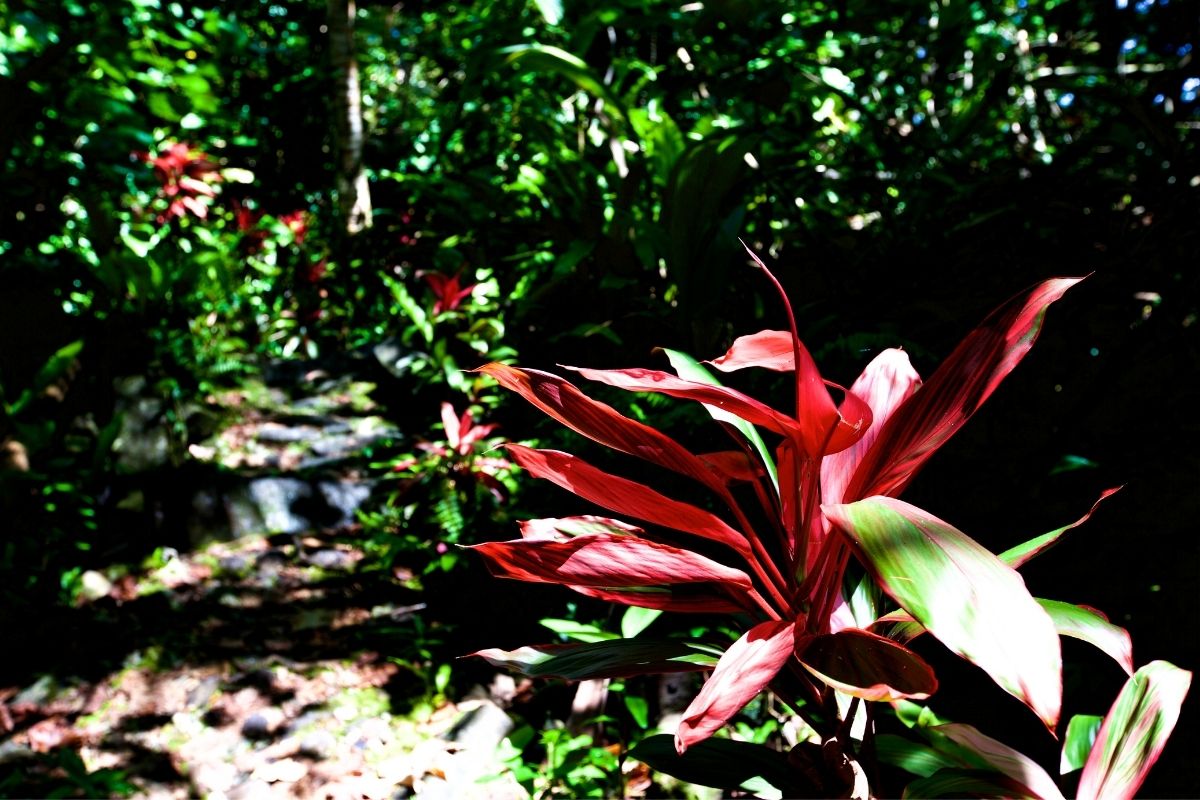
The Hawaiian good luck plant or Ti plant has achieved popularity due to the exotic, bright red leaves. Although the red-leafed variant is the most common, there are numerous cultivars with yellow, pink, green leaves and even combinations of these colors.
This exotic plant is a palm-like tree and grows up to three feet on average. It needs enough bright light, but you should not keep it next to the unshaded window. Namely, cordyline does not tolerate full sun and prefers filtered and diffused lightning.
Therefore, the positions next to the west-facing windows that receive direct light only for half-day are perfect matches for this striking plant.
Ti plant requires moist air and a more or less uniform temperature throughout the year, which means that it can thrive only in a well-heated room. If the temperature is too low or the plant gets less light, the foliage’s color will start to grow faint.
3. Elephant Ear (Colocasia Esculenta)
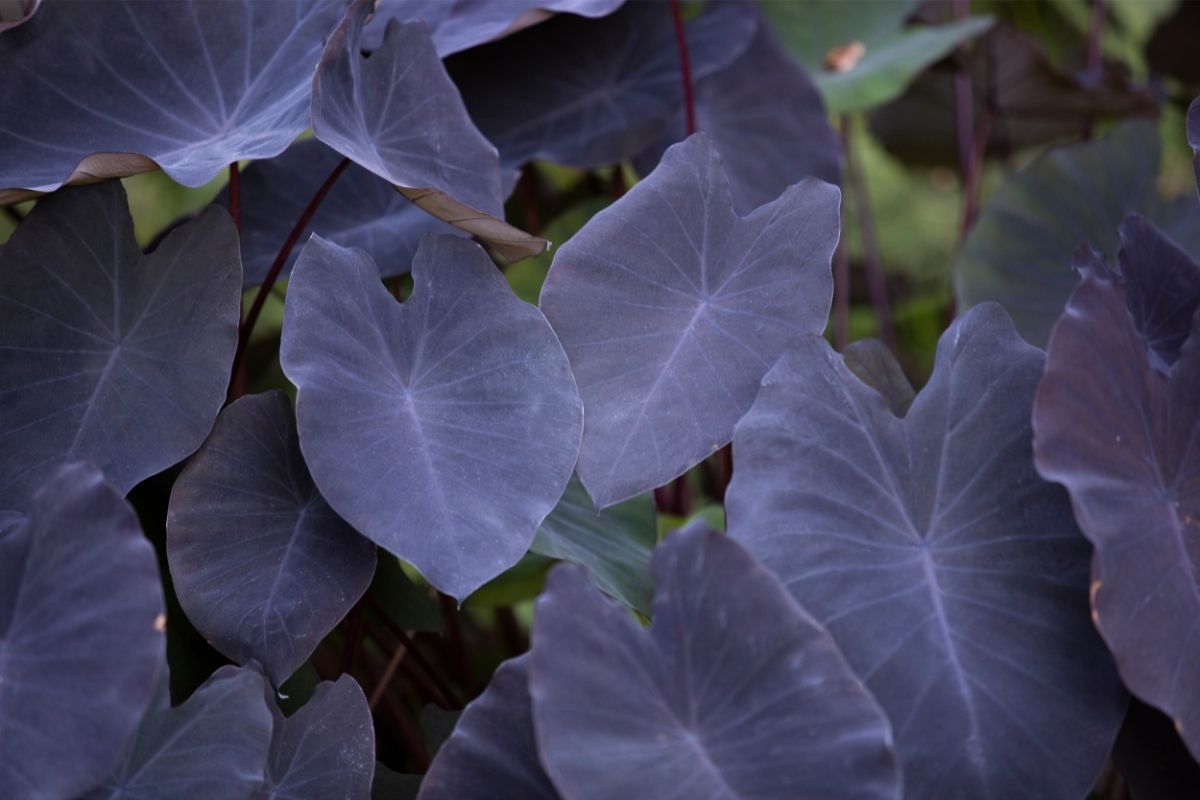
If you are looking for an instant way to turn your living room with west-facing windows into a mini jungle, the elephant ear with its attractive and impressive leaves is the perfect candidate! It grows fast and takes only two months to reach its maximum size of three to eight feet in an indoor environment!
As can be seen from its name, this exotic plant draws attention with its dark green, large heart- or arrow-shaped leaves. The flowers are small, white, and appear on long stalks during the winter.
Elephant ear, which comes from South Africa, loves a warm and bright environment but cannot tolerate direct sunlight, frost, or flooding. Therefore the plant feels more comfortable on the west windows, but it will accept the position next to an east-facing window.
.
However, it is significant to note that species with darker foliage are less light-loving than those with shiny, green leaves.
4. Coleus (Plectranthus Scutellarioides)
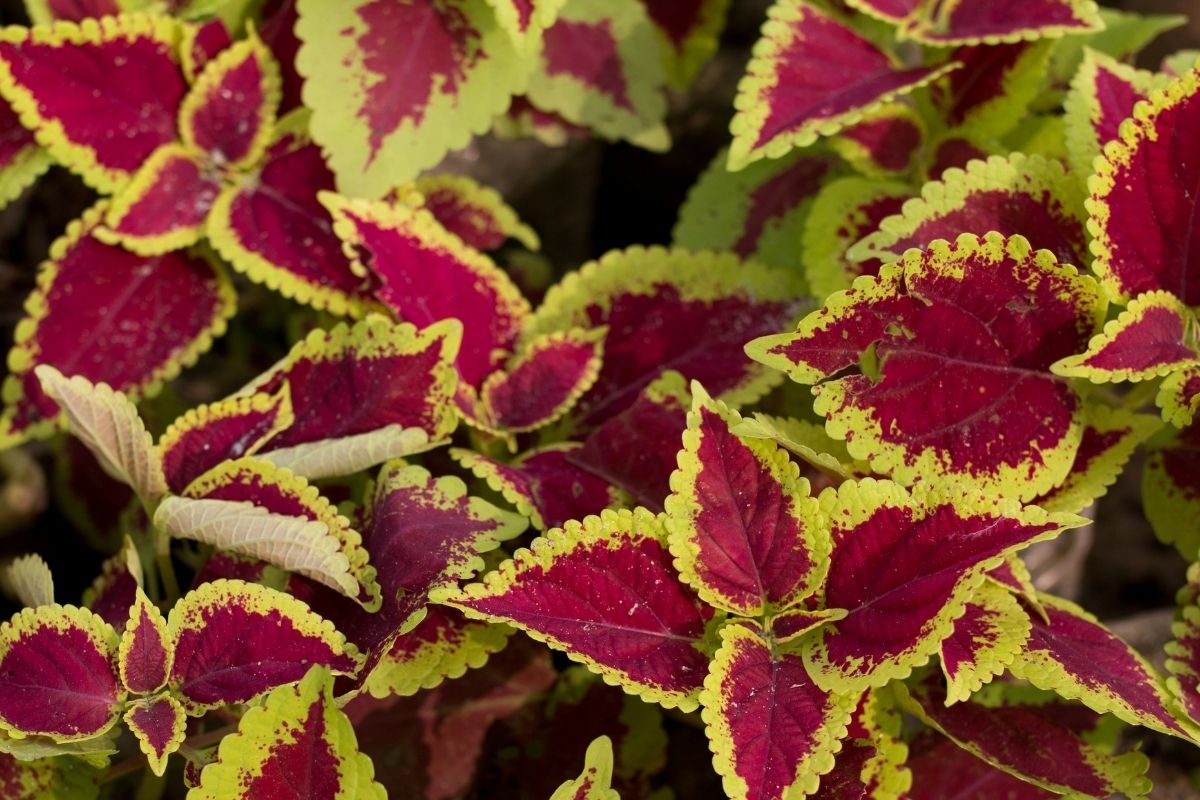
The elegant variant of nettle with the stunning foliage color is difficult not to notice! This small, undemanding shrubby plant native to Africa and Asia will bring an explosion of color to any space.
However, the plants need plenty of bright indirect light to develop amazing pigmentation and variegation. Namely, coleus does not like too much direct sun, especially not direct midday sun, but does not tolerate low light either.
Due to this, west-facing windows are a safe place where your colorful plant will reach its peak.
Although coleus is a perennial plant, it will become leggy and clumsy even if it gets enough light after one or two years. Yet, if you take cuttings during the summer and propagate the new plant, you will always have a bushy specimen on your window!
5. Amazon Elephant Ear (Alocasia Amazonica)
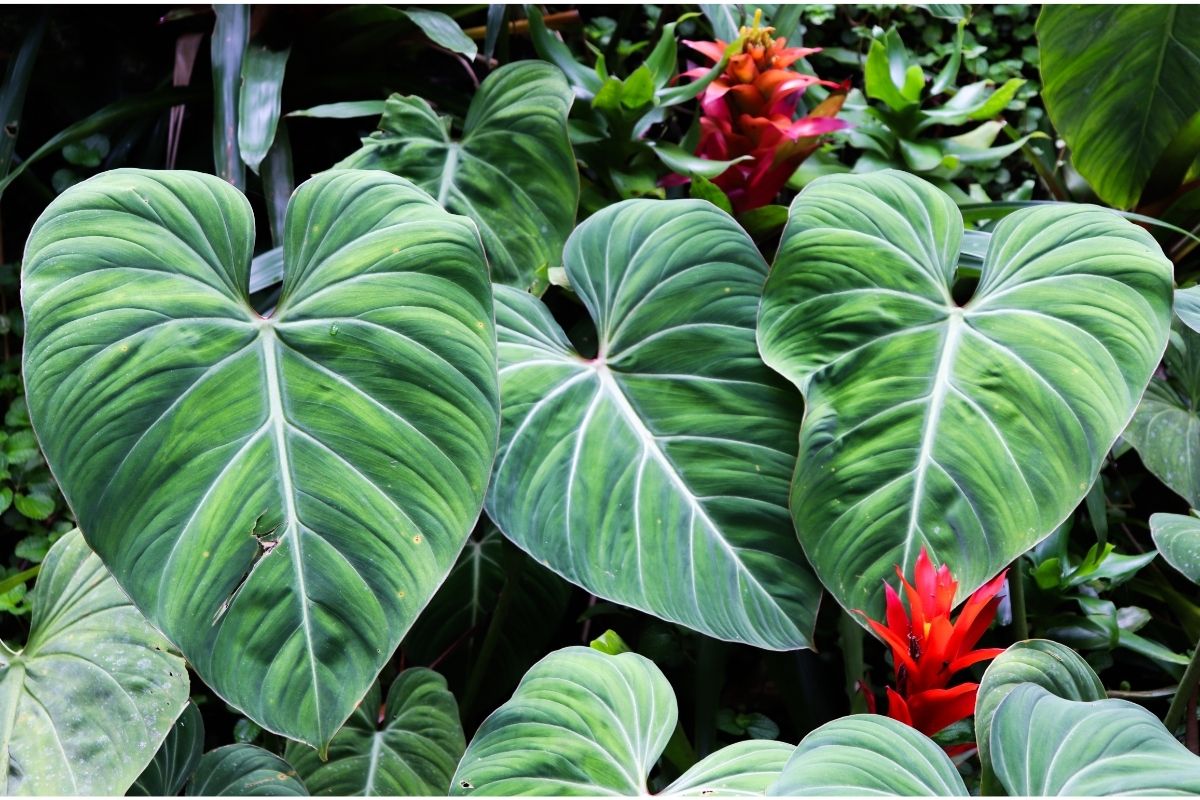
Alocasia amazonica is another good choice to grow next to a west-facing window. These tropical plants from the Araceae family delight with up to 16 inches long dramatic foliage through which very pronounced creamy white veins permeate.
Alocasia plants are native to the tropical parts of Asia, so don’t be fooled by the name of this hybrid – it was named after the nursery where it was first cultivated.
Like all tropical plants, Alocasia amazonica requires plenty of indirect light, high temperature, and moisture. Half shade is ideal for growing this plant, so place it next to the west-facing window where the direct sun could not reach its sensitive foliage in its zenith.
6. Dragon Tree (Dracaena)
Native to Madagascar, Dracaena, Dragon tree or Corn plant is well-known for its tree-like form and long green-colored, narrow leaves with red edges.
It is one of the most popular indoor plants because, in addition to its charming tropical appearance, it is easy to grow, and only extreme neglect of its water needs can lead to its ruin. In short, it is tolerant and not demanding to maintain, so it is a good choice for beginners.
Although it is adaptable to different lighting levels, this air purifier still feels best and grows best next to the west-facing window with plenty of indirect light.
Dracena is a slow-growing and long-lived plant, which is also one of the advantages because apart from transplanting every two years, when the root ball outgrows the pot, you will not have to deal with them much.
7. Geranium (Pelargonium)
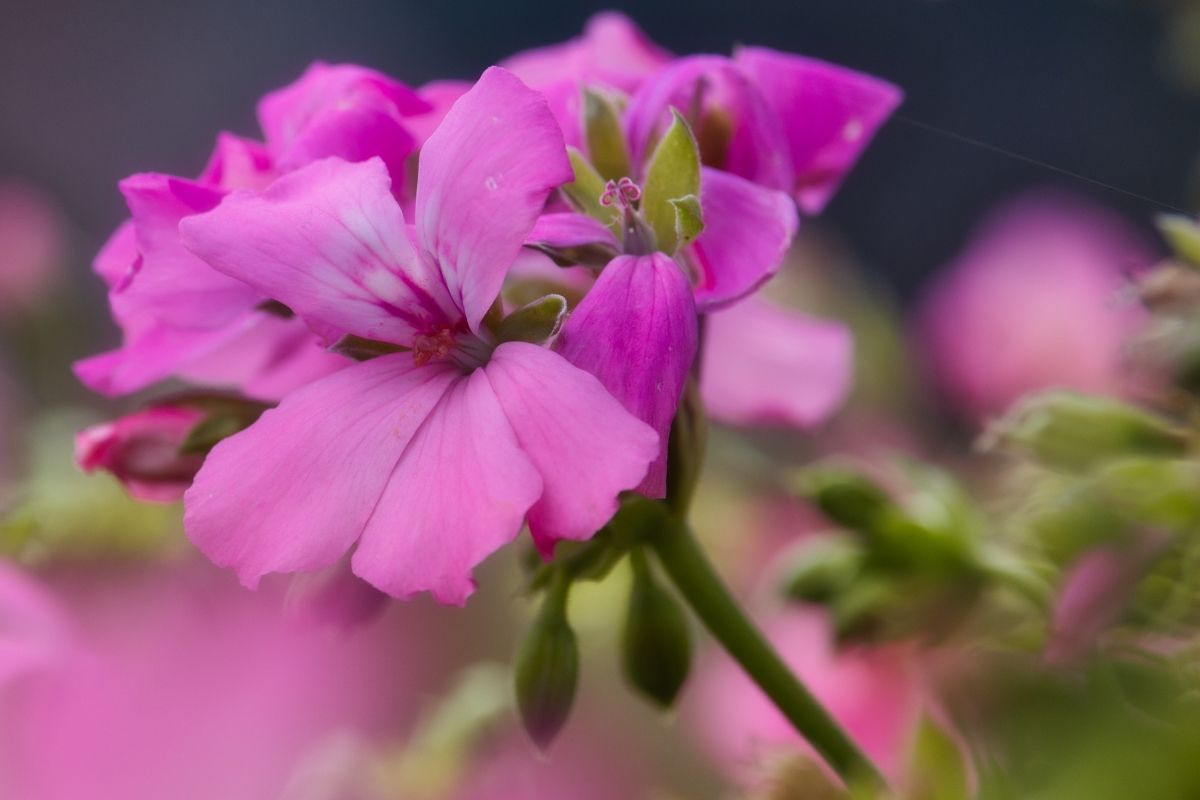
Geranium or Cranesbill is an almost classical, annual flower decoration of gardens and terraces. Yet, these heavy bloomers can be grown just as successfully as perennial indoor window plants or in a hanging basket.
Geranium’s small flowers of five petals gathered in globular inflorescences come in many colors: red, white, pink, dark purple, orange, violet, or even dichromatic varieties.
The flowering phase can last several months only if the plant receives at least four to six hours of sunlight per day!
That is why the west window is the only place where you will be able to enjoy a long-lasting floral performance of your geranium plants.
Water it moderately, not allowing the substrate in the pot to dry completely! Also, regularly remove faded flowers as this prolongs the flowering season.
8. Bird of Paradise (Strelicia Reginae)
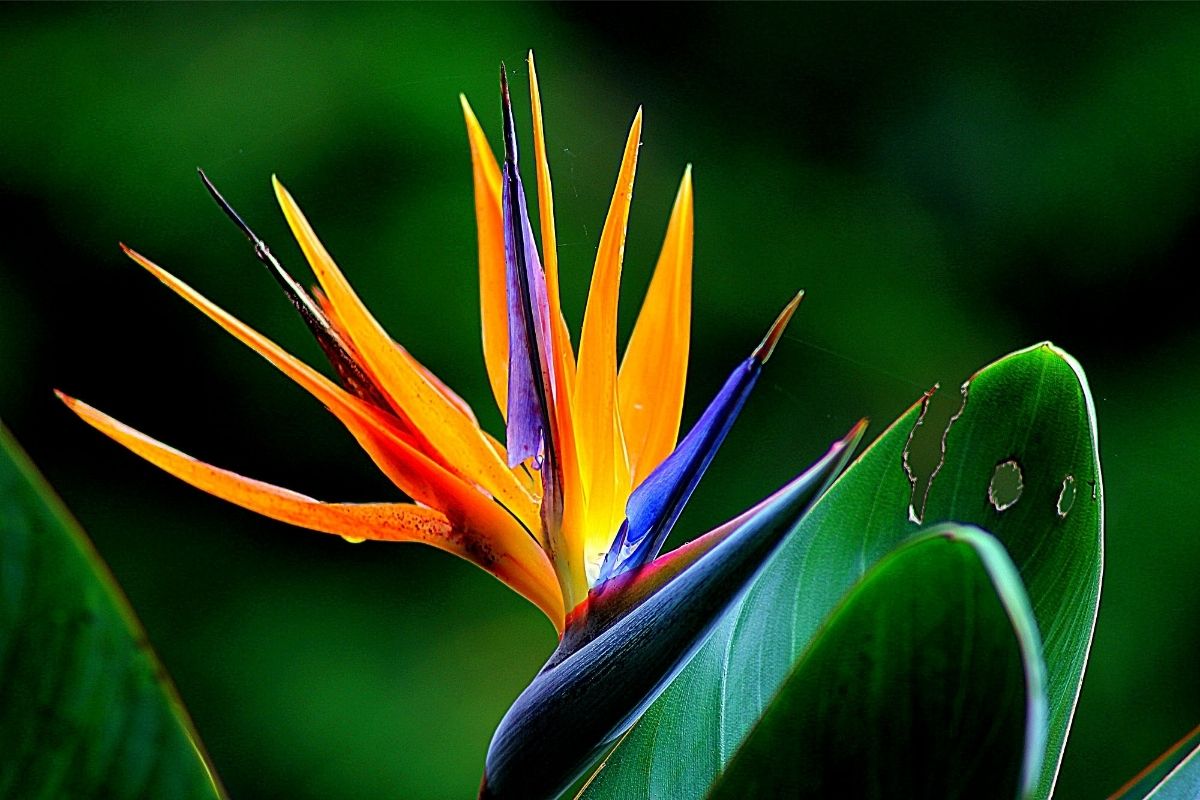
Next on our list of best plants for west-facing windows are the remarkable flowering houseplants Strelicia Reginae. Its bright, sparkling, orange and amazingly blue flowers are a unique phenomenon in the kingdom of flowers. They are more reminiscent of a bird of paradise than a flower explains its common name.
Despite its unusual and exotic appearance, the Bird of paradise plant is not difficult to take care of, and with a bit of care and effort, this plant will reward you with vivid, beautiful flowers.
The plant can grow from five to six feet in height, while its foliage, similar to banana leaves, can grow from 12 to 18 inches. Therefore, it is to say that due to its size, you should provide it with enough space to grow and place it a couple of feet from the window.
As the level of sunshine directly affects the flowering, the west-facing window with bright indirect light is ideal for this radiant plant.
9. Lady’s Slipper Orchid (Cypripedium Reginae)
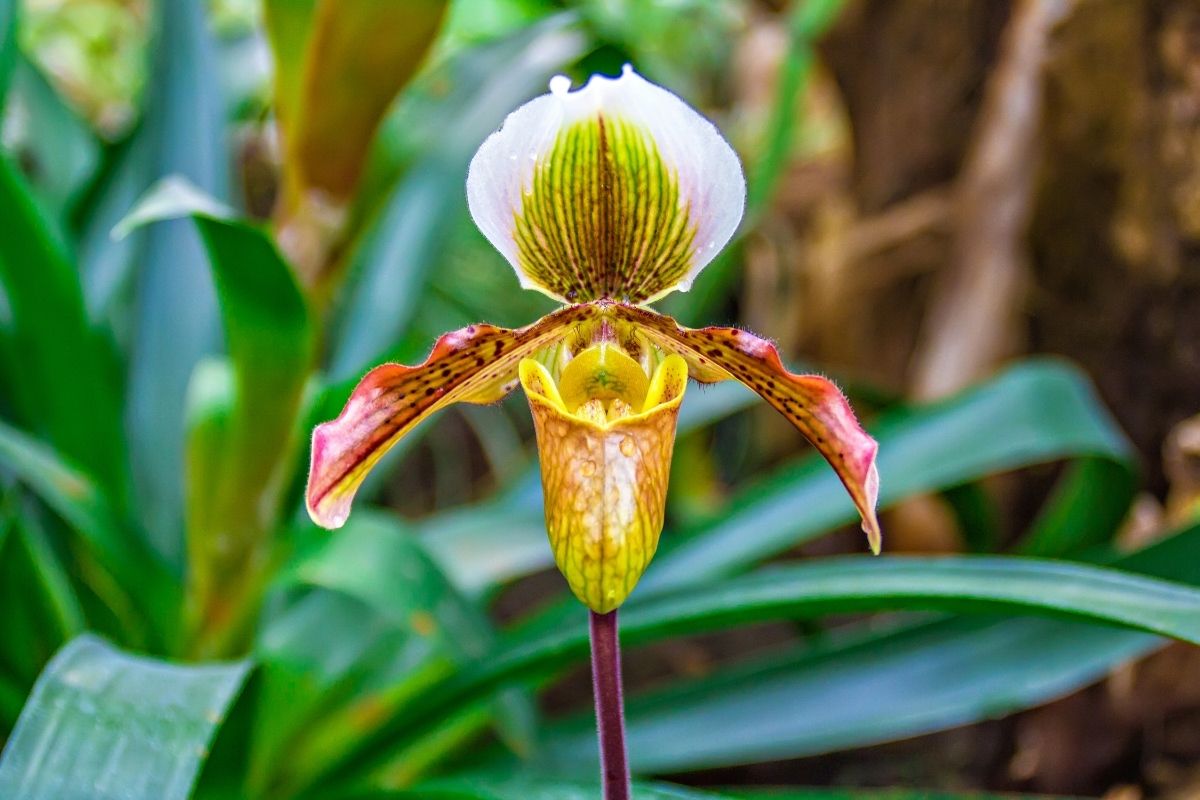
Lady’s Slipper is one of the rarest orchids in Europe, and many would say, one of the most beautiful.
The exotic flowers that develop at the top of the stem are large and have a pleasant scent reminiscent of apricot. The leaves are purple-brown and surround the lemon yellow, large, inflated lip, with an opening at the top. The shape of the lip is very reminiscent of a shoe which is how this species got its name. The color, form, and size of the lip make this orchid very noticeable and attractive.
Inside the lip, there are two anthers! It makes the plant unique since all other orchids have only one!
Atypical in many ways, Lady’s Slipper plants are, for a reason, on UNESCO’s list of world heritages.
Shady or filtered, indirect light will bring out the best in this plant but be patient since Lady’s slipper needs time to develop a flower! It can take six to 11 years until the first flower grows, making it one of the slowest flowering plants in the world.
10. Flamingo Flower (Anthurium)
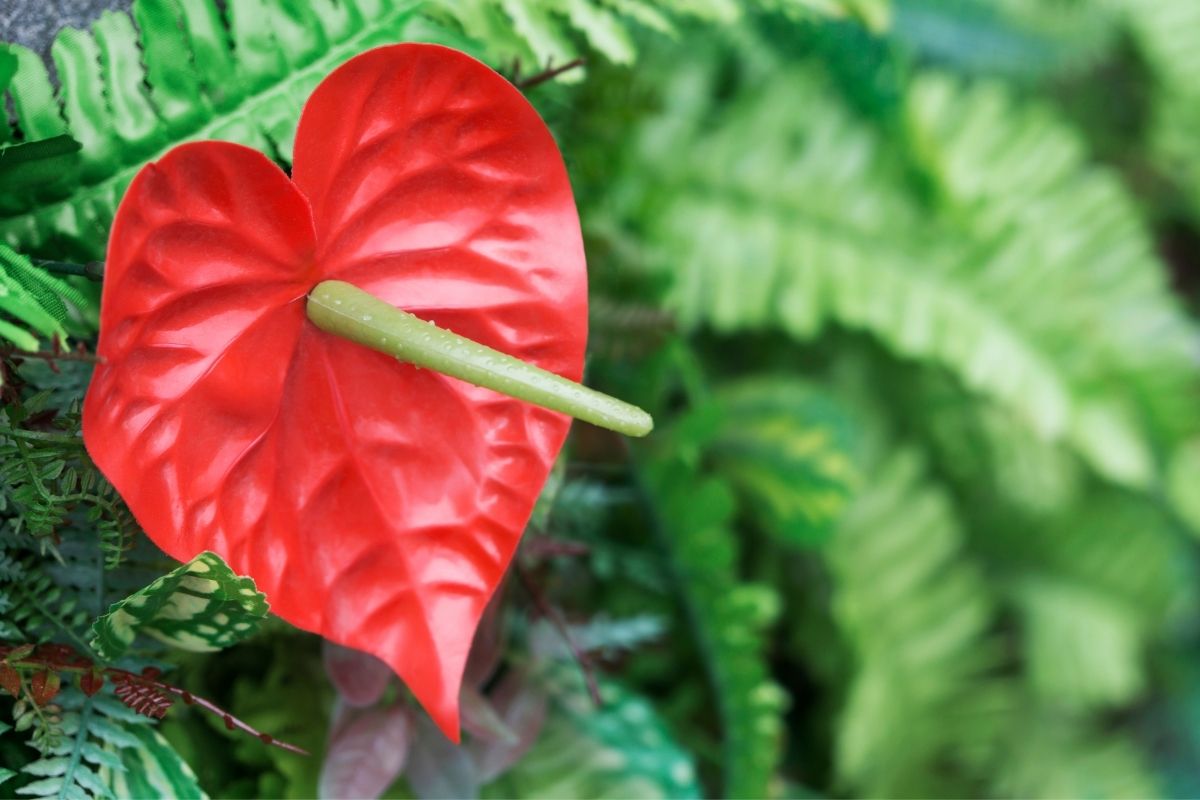
Native to South and Central America, Anthurium is a popular houseplant recognizable by its large and shiny leaves and “flowers” of bright colors with a yellowish piston in the middle. However, what many people consider anthurium’s flower is not a flower at all. Instead, the red, waxy formation is its bract or so-called spathe!
Anthurim’s trademark is its red-colored spathe, but sometimes it can be white, pink, orange, pink, or freckled. The unusual combination of the red spathe and yellowish piston inspired this common name of these plants – the Flamingo flower.
It does not tolerate direct sun since too much light can damage its leaves. Therefore, bright indirect light on the east and west windows best suits the plants.
11. Dumb Cane (Dieffenbachia)
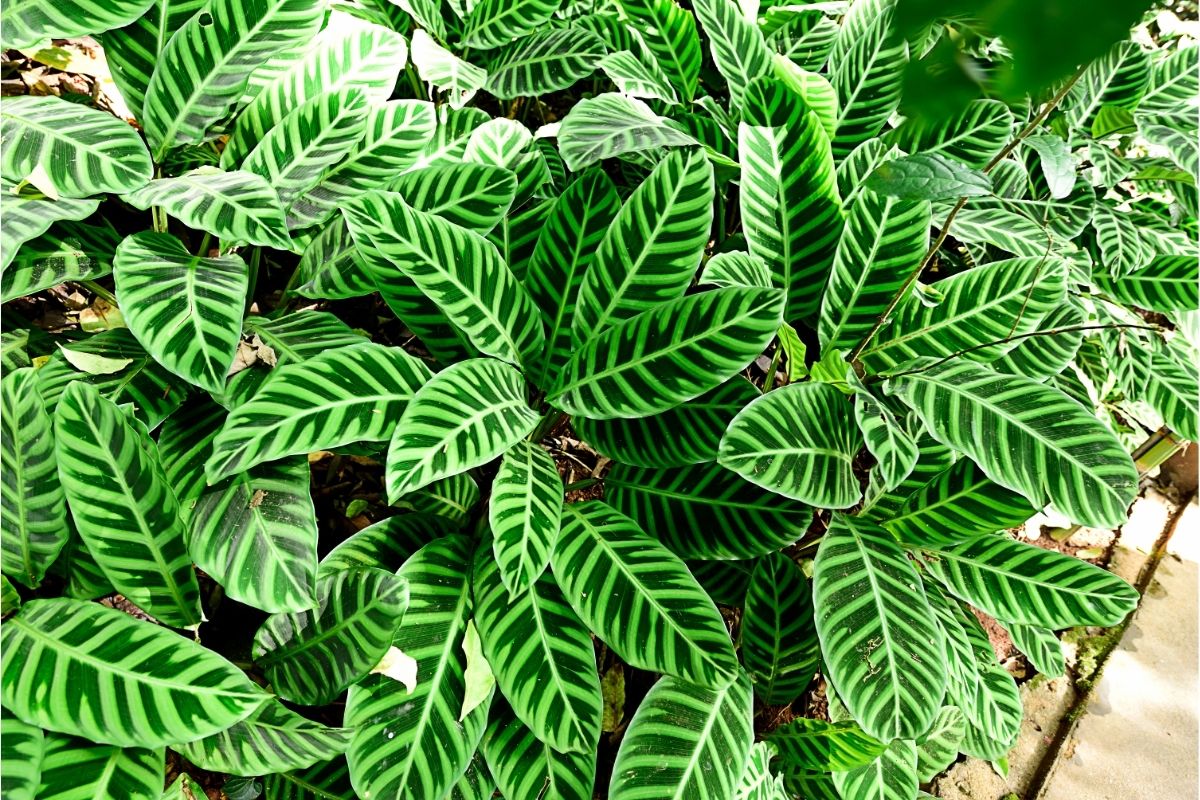
This species stands out with extensive green leaves interspersed with diagonal patterns from the middle to the edge of the leaf. It was named after Joseph Dieffenbach, a passionate lover of tropical plants from the Vienna Botanical Garden in the 19th century.
Apart from its magnificent appearance, it is well-accepted for its fast growth, durability, and easy maintenance, so it is often grown as a houseplant.
Like all tropical plants, it does not like direct sun. However, since west-facing windows receive direct sunlight in the second half of the day, those plants that get light from windows with curtains will do best.
Yet, be careful, and do not place your plant in an overly shaded position as lack of light can cause slower growth, the leaves to darken, and the white color of the striped leaves to become faintly visible.
Like other members of the Araceae family, this lush plant is poisonous since it contains calcium oxalate crystals in all parts. If ingested, it can irritate the oral cavity and cause swelling, so you need to keep it out of the reach of children and pets.
12. Urn Plant (Aechmea Fasciata)
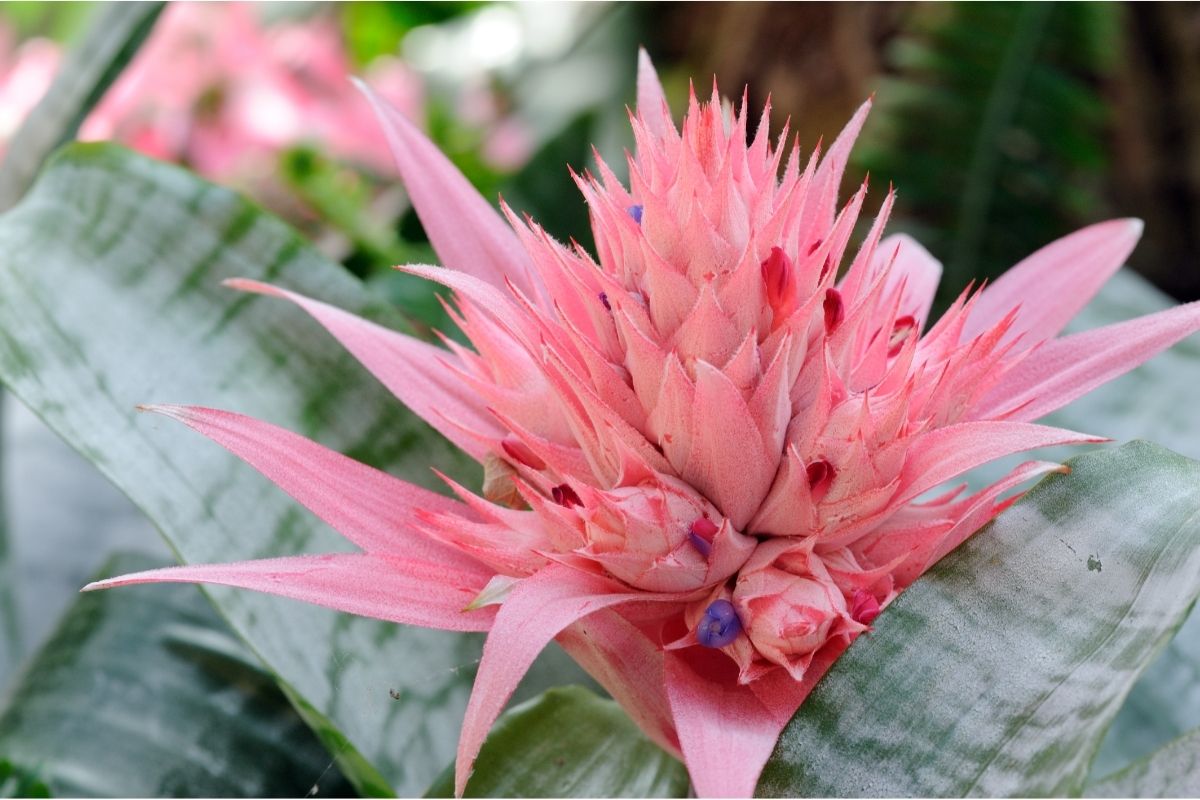
The gorgeous Urn plant, famous for its beautiful flowers, is native to South American rainforests. In nature, it is an epiphyte that grows on other plants, supplying itself with moisture and nutrients through its host.
Like Dieffenbachia, Aechmea fasciata is not a fan of the full sun or blazing, direct light, and therefore you should not place it next to south-facing windows!
The combination of mild sun and filtered light make this plant happy, and, therefore, it is a perfect candidate for curtained west-facing windows.
The Urn plants must be at least three years old to bloom. Its spike-like flower has pink bracts from which tiny blue flowers develop. Unfortunately, the blue flowers soon wither, but unlike them, the pink bracts remain on the plant even up to 6 months after flowering. After the bracts wither, the plant itself slowly begins to die away.
Fortunately, the plants previously give aside offsets which means you can grow a new plant when the mother plant dies.
13. Croton (Codiaeum Variegatum)
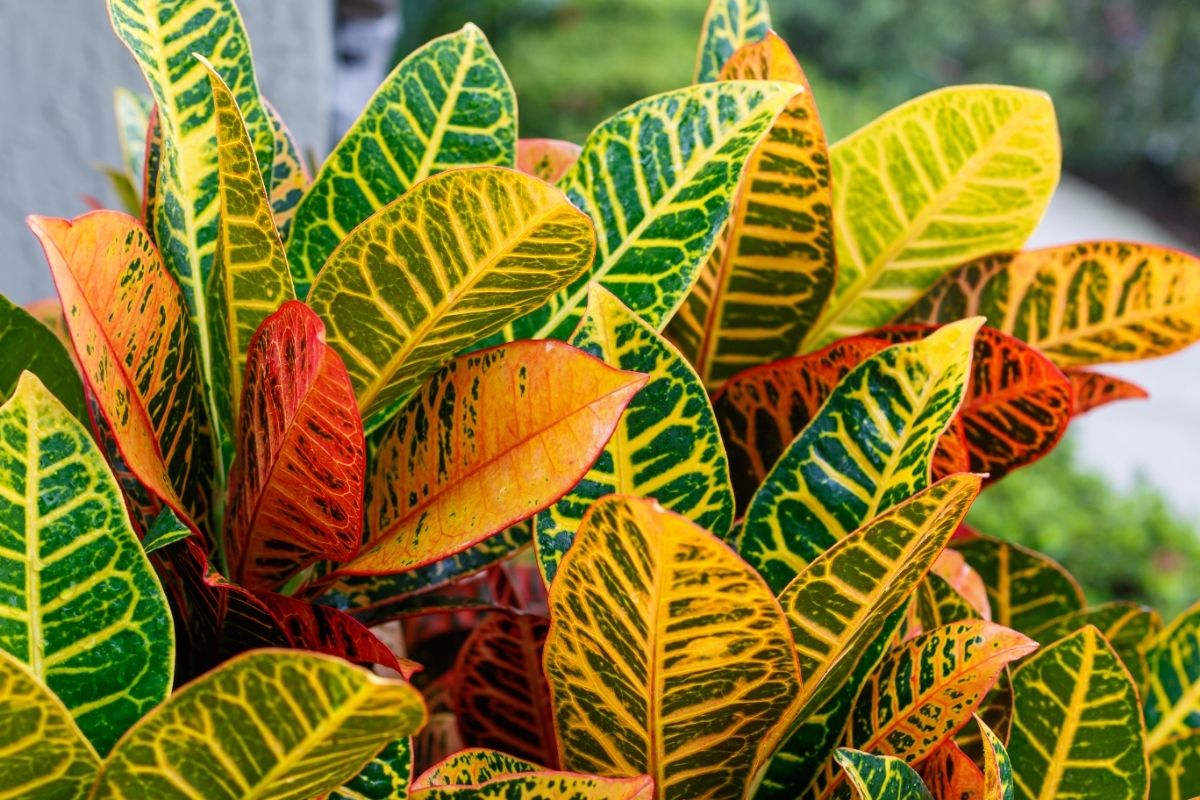
This beautiful evergreen plant has leaves streaked with yellow veins and different shades of green, red, pink, yellow, or orange patterns, while the reverse of the leaf is usually reddish. The shape of the leaf varies from narrow, elliptical, irregular, serrated to lanceolate.
No doubt, Croton is one of the most colorful indoor plants you can grow because each leaf is a masterpiece of different shades and patterns.
However, to show or maintain the splendor of colors, Croton needs at least six or more hours of bright indirect light during the day! The west-facing window provides just that – abundance of bright sun without fear of damaging its delicate leaves!
Aside from a lot of filtered light, the bushy Croton likes uniform temperature throughout the year since fluctuations and sudden temperature changes can cause leaves to fall off.
14. Rubber Plant (Ficus Elastica)
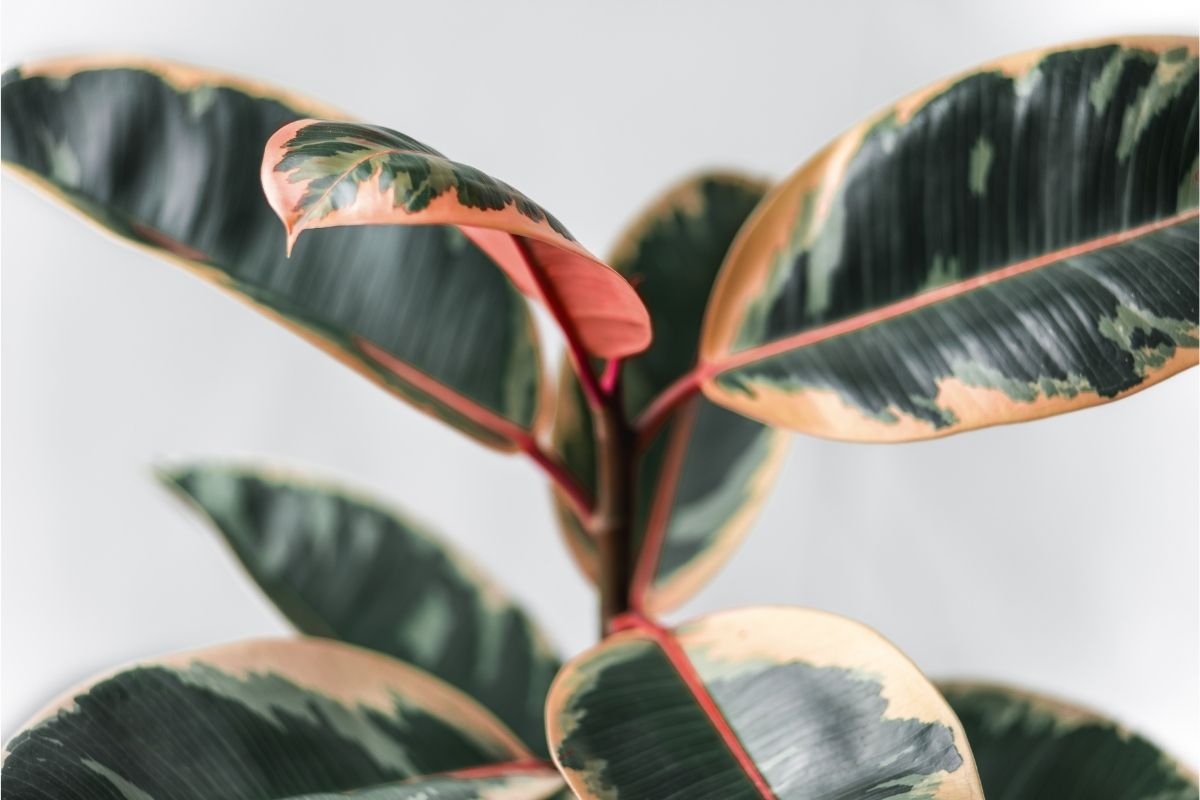
Few can resist the Rubber plant’s lush green foliage of rich, waxy sheen whose color is permanent throughout the year! Its upright, sculpture-like figure easily dominates the space as a focal point, making Ficus elastica one of the well-liked plants in apartments, houses, and offices.
In its natural habitat, the long-lasting native of Southeast Asia, over time, can grow 50 to 100 feet tall and create a trunk six feet wide. Even as a houseplant, Ficus elastica is a species of impressive dimensions, but regular pruning will ensure that this plant remains healthy, controlled, and does not overgrow the space where it is.
Its large, shiny, and meaty leaves consume lots of oxygen at night, so do not place your plant in a bedroom. In addition, it is toxic to animals and can cause mild irritation and allergic reactions in children and adults, so they should be displayed somewhere out of reach.
Rubber plant can withstand a wide range of environments – from bright indirect light to medium-low lighting. However, if you want the best results in plant growth and leaf glossiness, give it a place protected from direct sunlight by a sheer curtain next to a west-facing window.
RELATED: How To Propagate Rubber Plant: Things To Know Beforehand
15. Umbrella Plant (Schefflera)
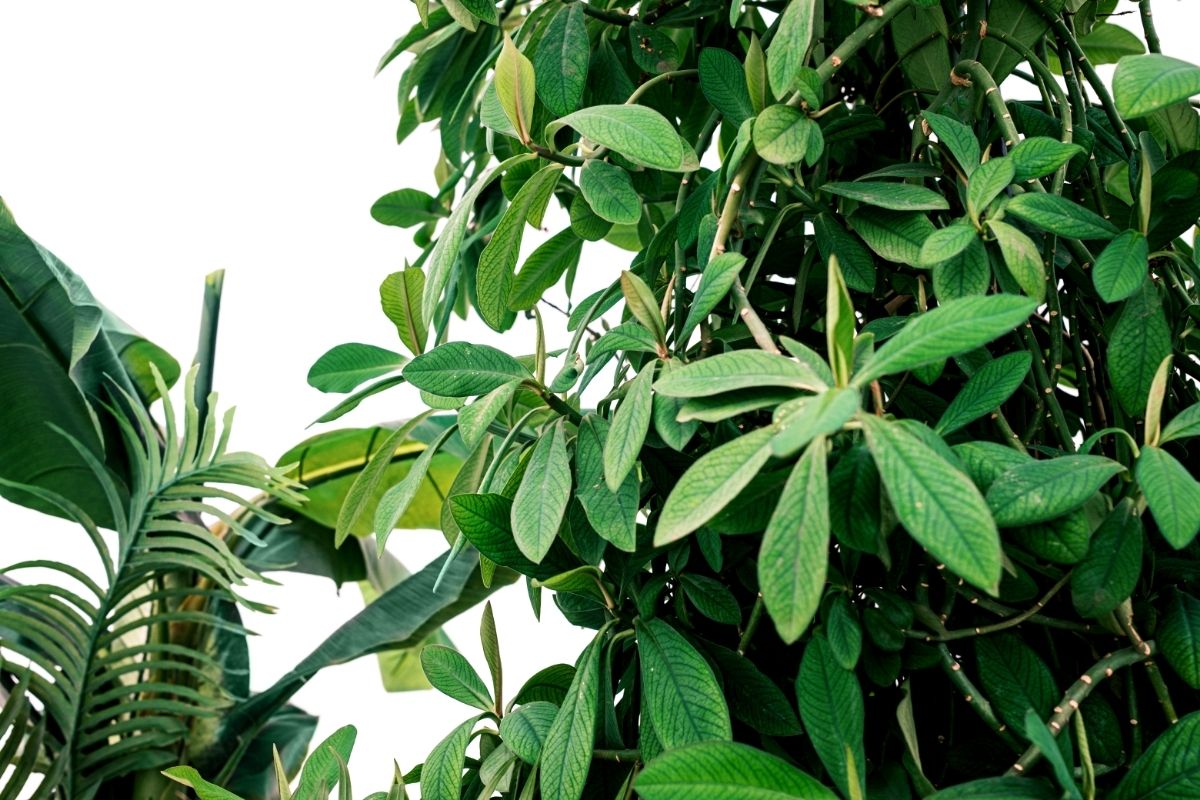
Schefflera plants got the botanical name in honor of the German botanist Jacob Christian Scheffer, but due to the specific shape of its leaves, it is also known as the Umbrella plant or Umbrella tree.
The lush Umbrella plant in its native Taiwan grows up to 50 feet high and, even indoors, can be a sizable plant. Yet, with regular pruning, you can control its shape and dimensions.
Schefflera likes bright and airy places, but you should be careful not to put it in direct sunlight or right next to the south-facing window since the hot sun can burn its leaves. Consequently, place it a few feet from the west-facing window where it will enjoy the abundance of indirect sun.
Frequently Asked Questions
Can succulents grow on west-facing windows?
Most succulent plants like full sun and grow best on south-facing windows. However, many of them, such as a Jade plant, Christmas cactus, or Aloe vera, can tolerate various light levels and will do well on west-facing windows.
Is a west-facing window suitable for an air plant?
Air plants need at least a few hours of bright indirect light per day, which the west-facing window provides. However, place them at least three feet from the window to prevent too much light.
How much sun does the west-facing window get?
The room with the west windows provides shade in the morning and noon and bright sun in the afternoon. It means at least six or more hours of direct sunlight per day in the northern hemisphere during the summer.
Learn more about 14+ Best Plants for South Window – VIP’s of the Blazing Sun
Also, read our tips for the Top 9 Hanging Plans For Low Light – The Winning Combination For Tropical Vibe and Types of Naked Ladies Flowers – Three Species Under the Same Name







